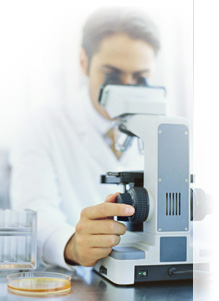MRSA (Methicillin-Resistant Staphylococcus Aureus)
MRSA (Methicillin-resistant Staphylococcus aureus) has been in the news a great deal recently, as MRSA infections have become more common in the community setting. Staph bacteria (Staphylococcus aureus) are one of the most common causes of skin infection in the United States. MRSA is a germ that is highly resistant to common antibiotics.
According to the Centers for Disease Control and Prevention (CDC) the majority of MRSA infections occur in hospitals or other healthcare settings, amongst those persons with weakened immune systems. MRSA bacteria can cause illness outside of healthcare facilities, and is referred to as community-associated MRSA, or CA-MRSA. MRSA infections in the general community can occur in otherwise healthy individuals and typically present as skin infections that look like pimples, boils, or lesions. They often occur at the site of prior skin trauma or areas covered by hair. The infection can cause pain and discomfort, redness, swelling, and may have pus or drainage. MRSA often begins as a small skin infection, but can spread quickly and if left untreated, can progress into a more serious condition that can affect other parts of the body.
The CDC reports that transmission occurs most frequently by direct skin-to-skin contact. It is also transmitted by contact with contaminated surfaces or shared items that have come into contact with the infection. The best way to prevent a MRSA infection is to practice good hygiene. The spread of MRSA can be prevented by simple measures such as hand washing, covering existing skin trauma and infections, and avoiding any sharing of personal items.
MRSA skin infections can occur in any setting, but certain factors make it easier for the bacteria to be transmitted and have been associated with the spread of MRSA. The CDC identifies five common factors, the "5 C's", leading to increased risk of MRSA infections: crowded living conditions; close skin-to-skin contact; compromised skin (cuts and abrasions;) contaminated items and surfaces; and lack of cleanliness. In addition to healthcare facilities, common locations where the "5 C's" may occur include schools, college dorms, daycare centers, correctional facilities, military barracks, and gyms, as well as general households.
Most MRSA skin infections can be effectively treated using alternate antibiotics and/or drainage. The CDC reports that more serious infections are rare in healthy individuals. Prompt medical treatment is important to avoid complications, as well as following simple measures to prevent the spread of MRSA to others. Individuals who have an infection and know or live with others who also show signs of infection should direct them to seek medical attention. To prevent a recurrence, be sure to follow doctor's instructions, as well as steps to prevent further infection. The CDC recommends covering wounds with clean, dry bandages until fully healed, and frequent hand washing, especially after changing bandages or touching the infection. Do not share any personal items, and wash soiled clothes, sheets, and towels with laundry detergent and dry them in a clothes dryer to help kill bacteria.
Factors that make it easier for MRSA to be transmitted: 5 C's
|
The CDC recommends several ways to prevent the transmission and spread of MRSA skin infections.
Practice Good Hygiene
- Keep hands clean by washing thoroughly with soap and water or using an alcohol-based hand sanitizer.
- Shower immediately after participating in exercise.
- Keep cuts, abrasions and scrapes clean and covered with a clean, dry bandage until healed.
- Avoid contact with other persons' wounds or bandages.
- Avoid sharing personal items that come into contact with bare skin (towels, washcloths, razors, clothing, uniforms).
- Place a barrier (towel or clothing) between your skin and shared equipment, and wipe surfaces before and after use.
For more information, please visiting the following websites:
- http://www.webmd.com/skin-problems-and-treatments/understanding-mrsa-methicillin-resistant-staphylococcus-aureus
- http://www.cdc.gov/NCIDOD/DHQP/ar_mrsa.html
- http://www.cdc.gov/NCIDOD/DHQP/ar_mrsa_ca.html
- http://www.nlm.nih.gov/medlineplus/mrsa.html
- http://www.medicinenet.com/mrsa_infection/article.htm




